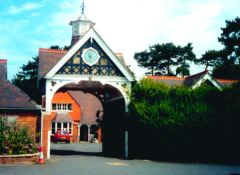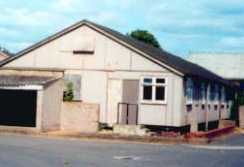Turing Sources | Pages from Alan Turing's
|
In late 1940 Alan Turing wrote a report describing the methods he and his colleagues at Bletchley Park had used to break into the German Enigma cipher systems. At Bletchley it was known as 'the Prof's Book.' A copy of this handbook was at last released from secrecy by the American National Security Agency in April 1996, under the title 'Turing's Treatise on the Enigma.' Subsequently, a much better original copy was released by the (British) National Archives, box HW 25/3. This also revealed a title which had been lost in the American copy: Mathematical theory of ENIGMA machine. (Though, oddly, the report does not actually have any mathematical theory.)
For more on the context of this report, go to this page of the Alan Turing Internet Scrapbook.
The report was typed by Alan Turing himself, with diagrams and notes in his own handwriting. It was probably written hurriedly and left unrevised. The typewriting is poor and has also passed through several copying processes. It is not easy to read. But it is a fascinating picture of the work in hand during the battle of Britain, at a time when no-one had any idea what the future held.
This page picks out some particularly interesting pages, scanned from the American copy.
Three pages from the report
Page 97
...contains the heading 'A mechanical method. The Bombe' and reveals the crucial idea that defeated the plugboard complication. As Turing introduces it, '... a method of solution will depend upon taking hypotheses about parts of the keys and drawing what conclusions one can, hoping to get either a confirmation or a contradiction...' The method depends upon having made a correct guess about the corresponding short piece of plaintext.
Page 99
...has a diagram showing the analysis of the 25-letter Enigma cipher text with its 'crib' or guessed plaintext that Turing has given on page 97.
The ciphertext is DAEDAQOZSIQMMKBILGMPWHAIV
The plaintext is KEINEZUSAETZEZUMVORBERIQT
(keine Zusätze zum Vorbericht)
Turing's hand-drawn diagram at the top illustrates how implications then follow from making a hypothesis about the positions of the rotors.
The closed cycles in the diagram, for instance Z-S-A-E-M-Z, correspond to chains of logical implications giving consistency conditions independent of the plugboard. (You can see for yourself how these relate to the plaintext and ciphertext as given above. Turing has ignored letters 16-20 of the sequence because in his example he is assuming a turnover of the middle rotor to occur somewhere in this section.)
They make it possible to reject a rotor position, as inconsistent with the ciphertext and plaintext data, even though the plugboard remains unknown.
When these chains of logical implications are exploited to the full, then almost every 'wrong' rotor position will be rejected, leaving just a few to be tested in detail. Among them, if the plaintext has been guessed correctly, will be the correct rotor setting.
The diagram below is Turing's hazy sketch of the Bombe. This does not explain the crucial ideas that he and Gordon Welchman later used to mechanise the process of following chains of logical implications. These ideas — 'simultaneous scanning' and 'the diagonal board' — are described later in the report.
Page 104
...is Turing's description of how he arrived at the idea of 'simultaneous scanning'.
More of the Prof's BookThe entire American copy is in the Turing Digital Archive.The National Archives site has a feature on the Enigma showing an early part of the report, where Turing describes the Enigma machine. Tony Sale, founder of the Bletchley Park Museum, offers an explanation of how Turing arrived at the idea of the Bombe, based on the account in the 'Prof's Book.' Right: My photos, taken at Bletchley Park in 1998. |
 The stable buildings where Turing started in 1939-40 |
 Hut 8, where Turing's Naval Enigma section was based. |
Continue:
- Alan Turing Sources index page
- Relevant page of the Book Update
- Relevant page of the Alan Turing Internet Scrapbook
- Operation Ruthless, October 1940
| Quick Links: |
|
|
|
|
|
|
| |||